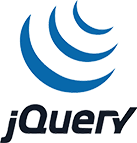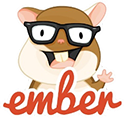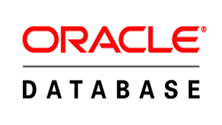


Our company, interpreting correctly the market and industry trends, made an early decision to invest in the full reengineering of its software product portfolio towards centralized architecture and web technologies, so, today, the vast majority of our software products (all our core ones) are already second generation web applications, built on cutting edge technologies.
The Agile Manifesto In February 2001, seventeen software developers met at the Snowbird resort in Utah to discuss lightweight development methods. They published the Manifesto for Agile Software Development, in which they said that by "uncovering better ways of developing software by doing it and helping others do it," they have come to value Individuals and interactions over Processes and tools, Working software over Comprehensive documentation, Customer collaboration over Contract negotiation, and Responding to change over Following a plan.
Individuals and interactions: self-organization and motivation are important, as are interactions like co-location and pair programming.
Working software: working software is more useful and welcome than just presenting documents to clients in meetings.
Customer collaboration: requirements cannot be fully collected at the beginning of the software development cycle, therefore continuous customer or stakeholder involvement is very important.
Responding to change: agile methods are focused on quick responses to change and continuous development.

Python is a high-level, general-purpose programming language. Its design philosophy emphasizes code readability with the use of significant indentation. Python consistently ranks as one of the most popular programming languages.

PHP (Hypertext Preprocessor) is the dominant web development language, powering the vast majority of the web applications and sites in the WWW. PHP is a server-side scripting language designed for web development but also used as a general-purpose programming language.

Laravel is an open-source PHP web application framework, created by Taylor Otwell and intended for the development of web applications following the model–view–controller (MVC) architectural pattern. Some of the features of Laravel are a modular packaging system with a dedicated dependency manager, different ways for accessing relational databases, utilities that aid in application deployment and maintenance, and its orientation toward syntactic sugar

Phalcon is an open source, full stack framework for PHP written as a C-extension, optimized for high performance. The functionality is exposed as PHP classes ready to use. Phalcon is loosely coupled, allowing to use its objects as glue components based on the needs of any application.

Coming Soon!

Coming Soon!

The Oracle Application Server (short Oracle AS), consists of an integrated, standards-based software platform. It forms part of Oracle Corporation's Fusion Middleware technology stack. The heart of Oracle Application Server consists of Oracle HTTP Server (based on Apache HTTP Server) and OC4J (OracleAS Containers for Java EE) which deploys Java EE-based applications. The latest version of OC4J offers full compatibility with the Java EE 1.4 specifications. Oracle Application Server became the first platform designed for grid computing as well as with full life-cycle support for service-oriented architecture (SOA).

Oracle Fusion Middleware (OFM, also known as Fusion Middleware) consists of several software products from Oracle Corporation. OFM spans multiple services, including Java EE and developer tools, integration services, business intelligence, collaboration, and content management. OFM depends on open standards such as BPEL, SOAP, XML and JMS. Oracle Fusion Middleware provides software for the development, deployment, and management of service-oriented architecture (SOA).

React (also known as React.js or ReactJS) is a free and open-source front-end JavaScript library for building user interfaces based on UI components. It is maintained by Meta (formerly Facebook) and a community of individual developers and companies.[4][5][6] React can be used as a base in the development of single-page, mobile, or server-rendered applications with frameworks like Next.js. However, React is only concerned with the user interface and rendering components to the DOM, so creating React applications usually requires the use of additional libraries for routing, as well as certain client-side functionality.

Ajax (short for asynchronous JavaScript and XML) is a set of web development techniques utilizing many web technologies used on the client-side to create asynchronous Web applications. With Ajax, web applications can send data to and retrieve from a server asynchronously (in the background) without interfering with the display and behavior of the existing page. By decoupling the data interchange layer from the presentation layer, Ajax allows for web pages, and by extension web applications, to change content dynamically without the need to reload the entire page. Data can be retrieved using the XMLHttpRequest object. Despite the name, the use of XML is not required (JSON is often used in the AJAJ variant), and the requests do not need to be asynchronous. Ajax is not a technology, but a group of technologies. HTML and CSS can be used in combination to mark up and style information. The DOM is accessed with JavaScript to dynamically display – and allow the user to interact with – the information presented. JavaScript and the XMLHttpRequest object provide a method for exchanging data asynchronously between browser and server to avoid full page reloads.

jQuery is a cross-platform JavaScript library designed to simplify the client-side scripting of HTML. jQuery is the most popular JavaScript library in use today, with installation on 65% of the top 10 million highest-trafficked sites on the Web. jQuery is open-source software licensed under the MIT License. The advantages of using jQuery are:
• Encourages separation of JavaScript and HTML: The jQuery library provides simple syntax for adding event handlers to the DOM using JavaScript, rather than adding HTML event attributes to call JavaScript functions. Thus, it encourages developers to completely separate JavaScript code from HTML markup.
• Brevity and clarity: jQuery promotes brevity and clarity with features like chainable functions and shorthand function names.
• Eliminates cross-browser incompatibilities: The JavaScript engines of different browsers differ slightly so JavaScript code that works for one browser may not work for another. Like other JavaScript toolkits, jQuery handles all these cross-browser inconsistencies and provides a consistent interface that works across different browsers.
• Extensible: New events, elements, and methods can be easily added and then reused as a plugin.

Ember.js is an open-source JavaScript application framework, based on the model-view-controller (MVC) pattern. It allows developers to create scalable single-page web applications[1] by incorporating common idioms and best practices into the framework.
Ember is used on many popular websites, including Discourse,[2] Groupon,[3] Vine, Live Nation, Nordstrom, and Chipotle.[4] Although primarily considered a framework for the web, it is also possible to build desktop and mobile applications in Ember. Ember follows Convention over Configuration (CoC), and the Don't Repeat Yourself (DRY) principle. It has been described as a highly opinionated framework built to be very flexible. From the beginning Ember was designed around several key ideas:
• Focus on ambitious web applications. Ember sets out to provide a wholesale solution to the client-side application problem. This is in contrast to many Javascript frameworks that start by providing a solution to the V in MVC, and attempt to grow from there.
• More productive out of the box. Ember is one component of a set of tools that work together to provide a complete development stack. The aim of these tools is to make the developer productive immediately. For example Ember CLI, provides a standard application structure and build pipeline. It also has a pluggable architecture and over fifteen hundred addons to enhance and extend it.
• Stability without stagnation. This is the idea that backward compatibility is important and can be maintained while still innovating and evolving the framework.
• Future web standards foresight. Ember has been an early adopter and pioneer of many standards around Javascript and the web including promises, web components and ES6 syntax. Yehuda Katz, one of Ember's cofounders, is a member on TC39, which is the committee responsible for future versions of the Javascript language.

Coming Soon!

Coming Soon!

Coming Soon!

Coming Soon!

Coming Soon!

Coming Soon!

Coming Soon!

Coming Soon!

Coming Soon!